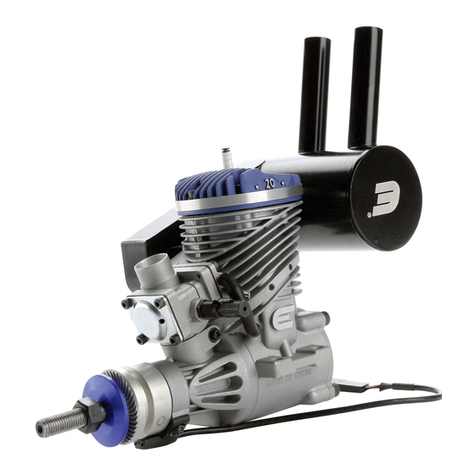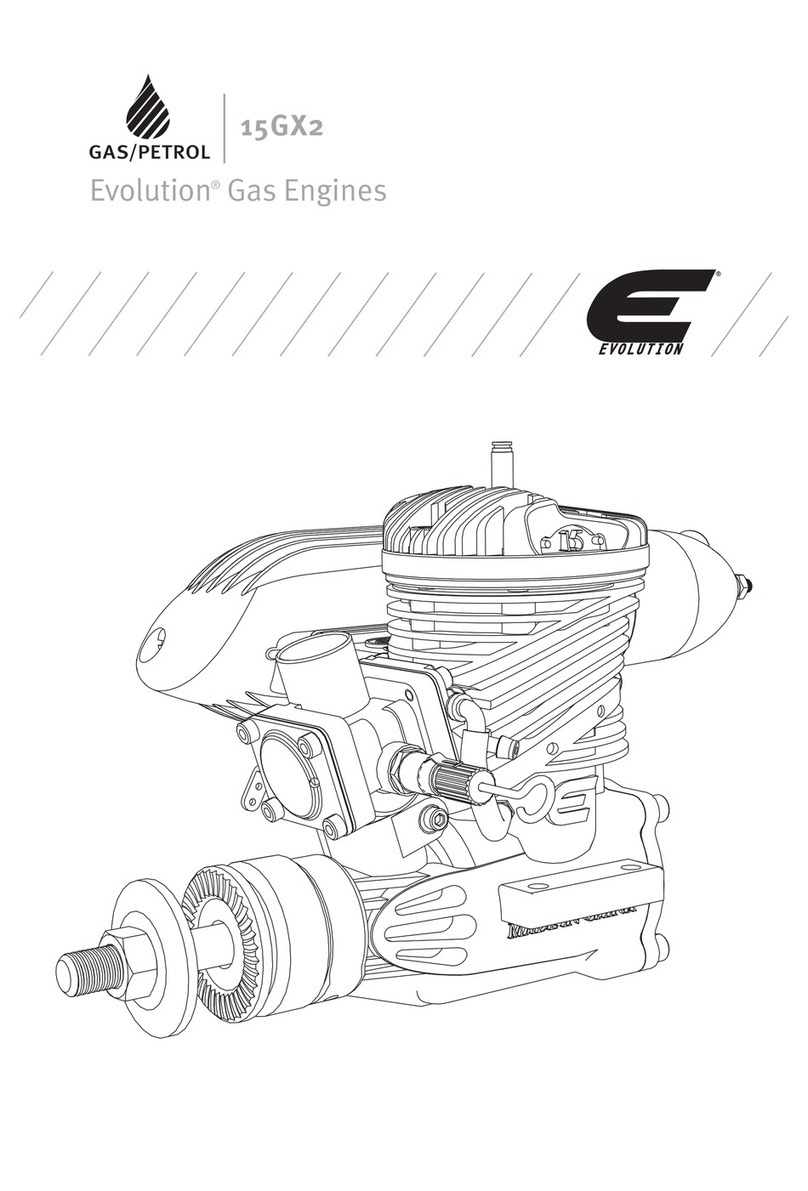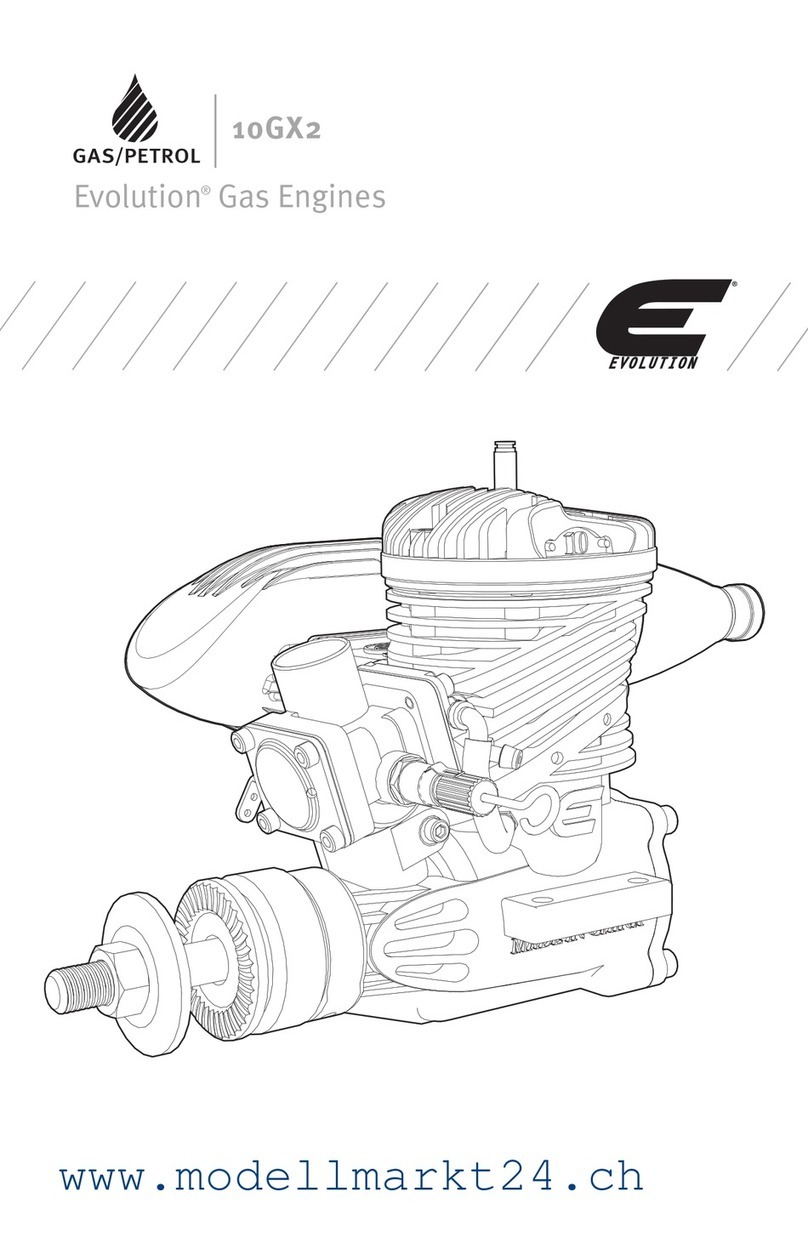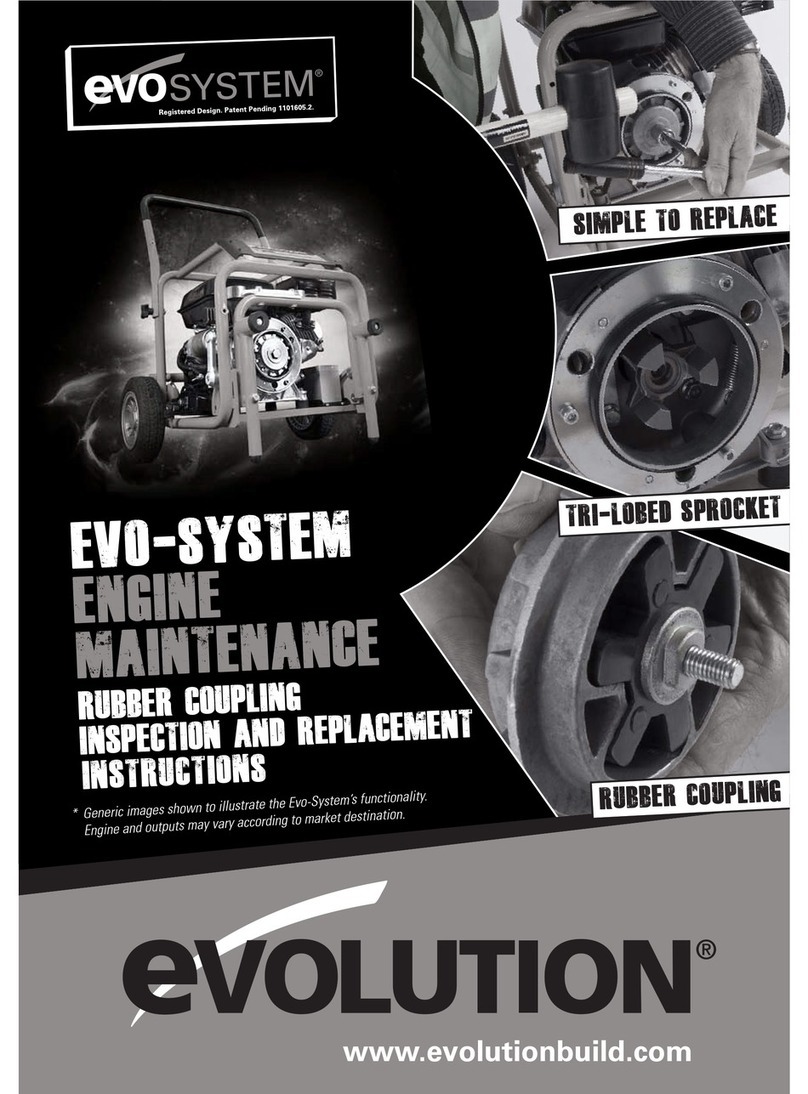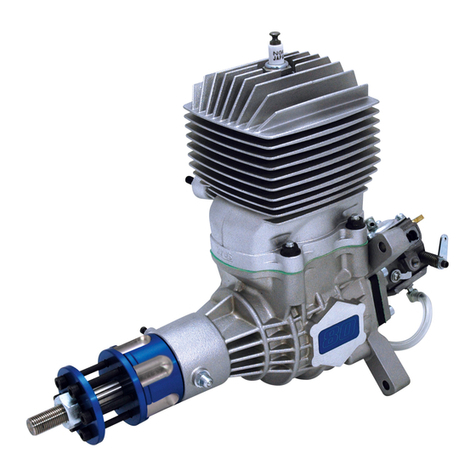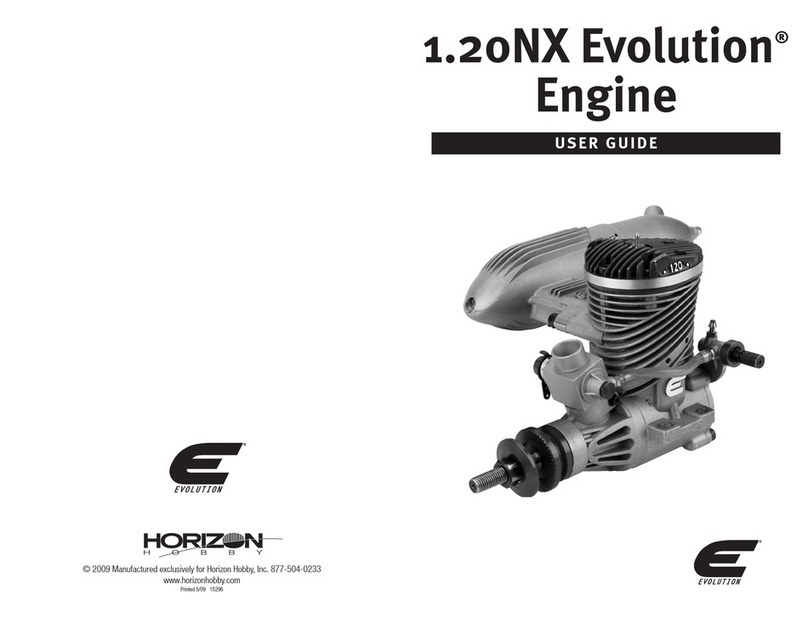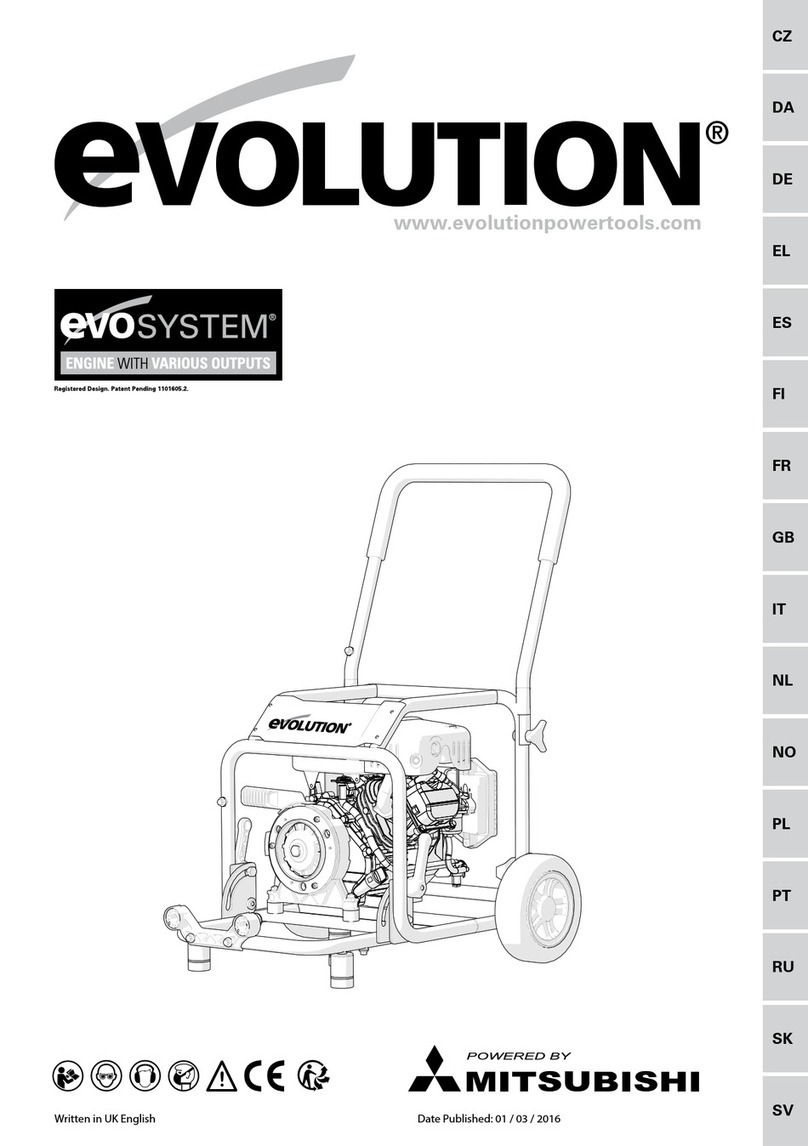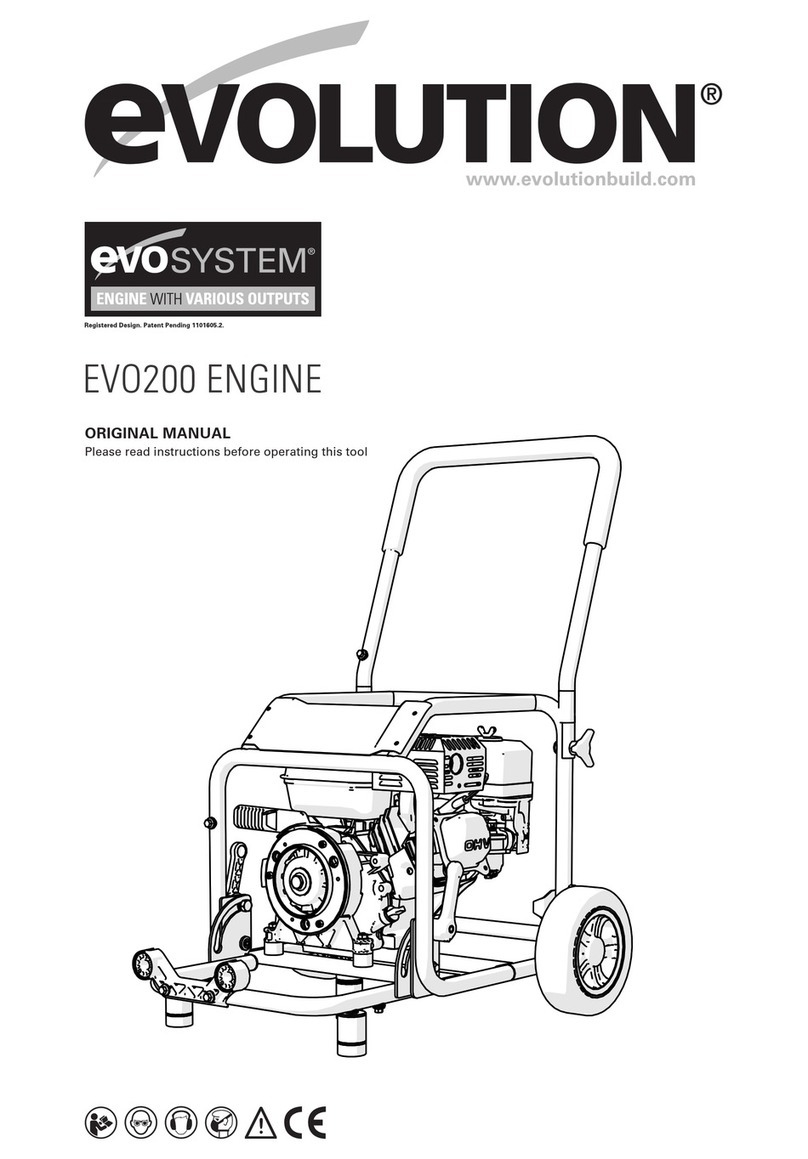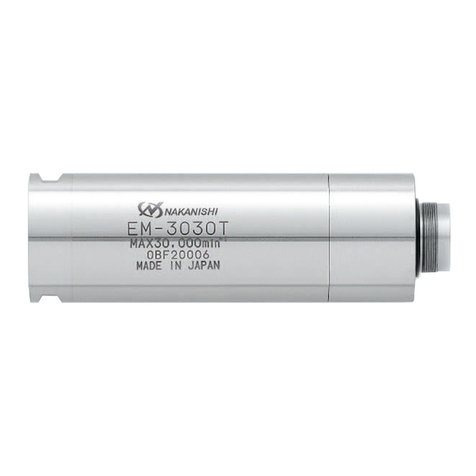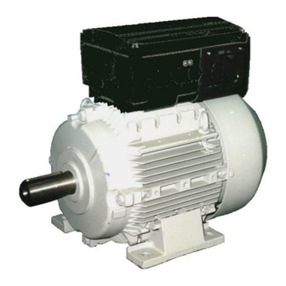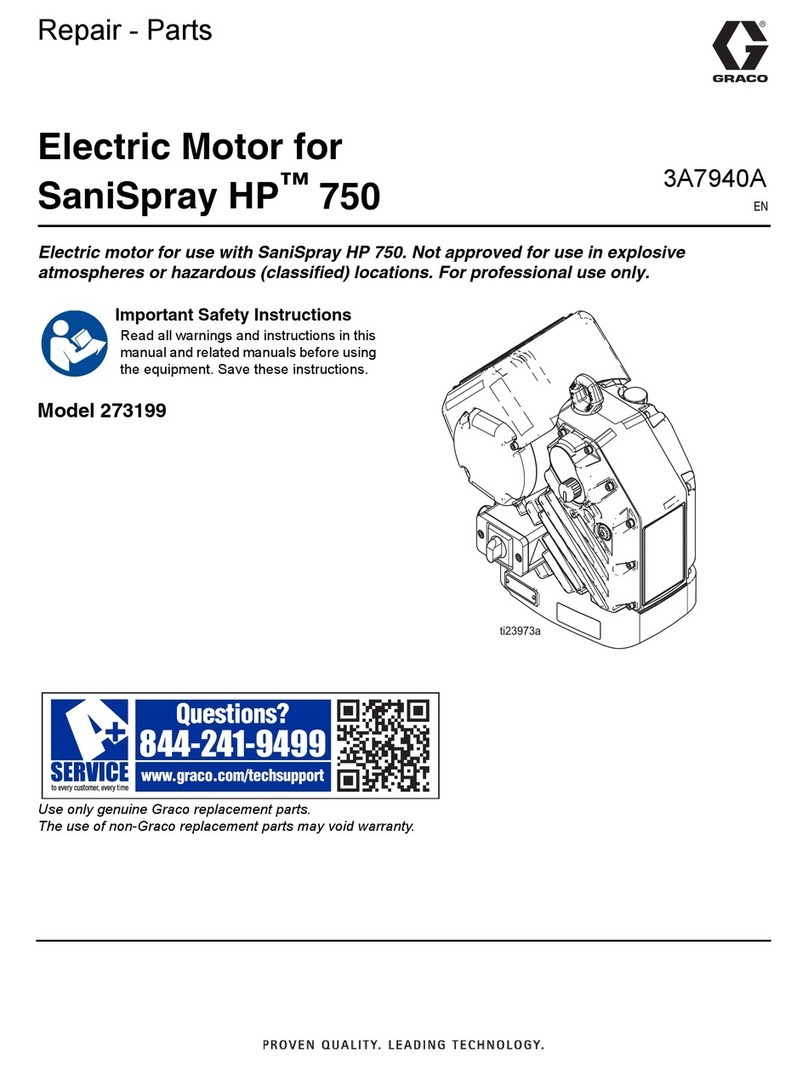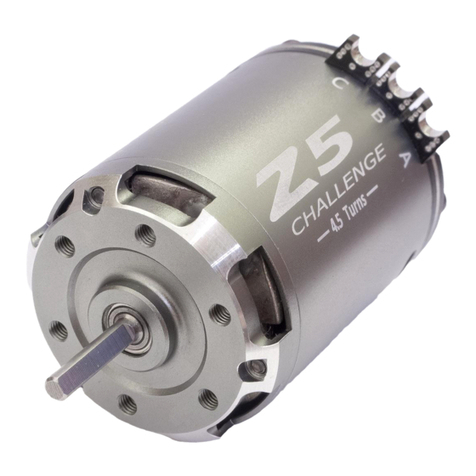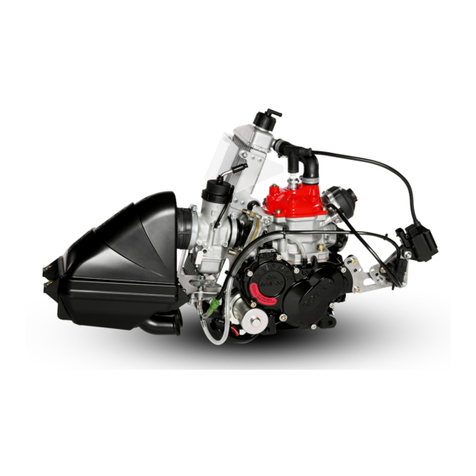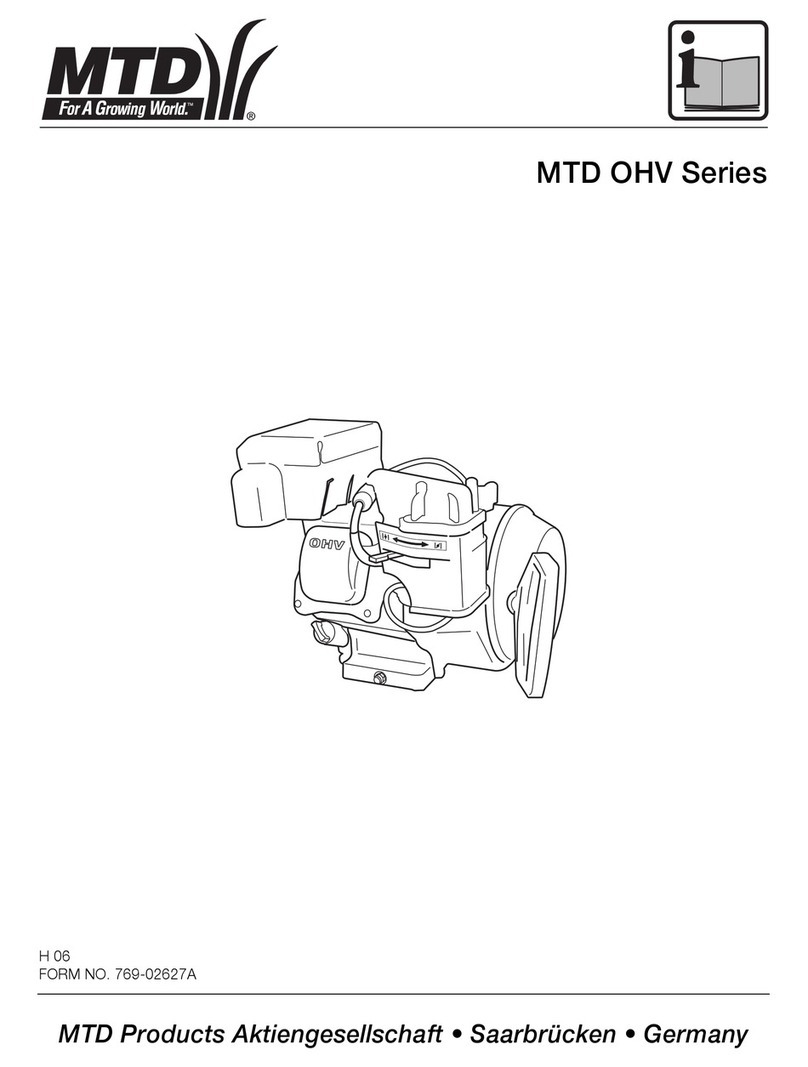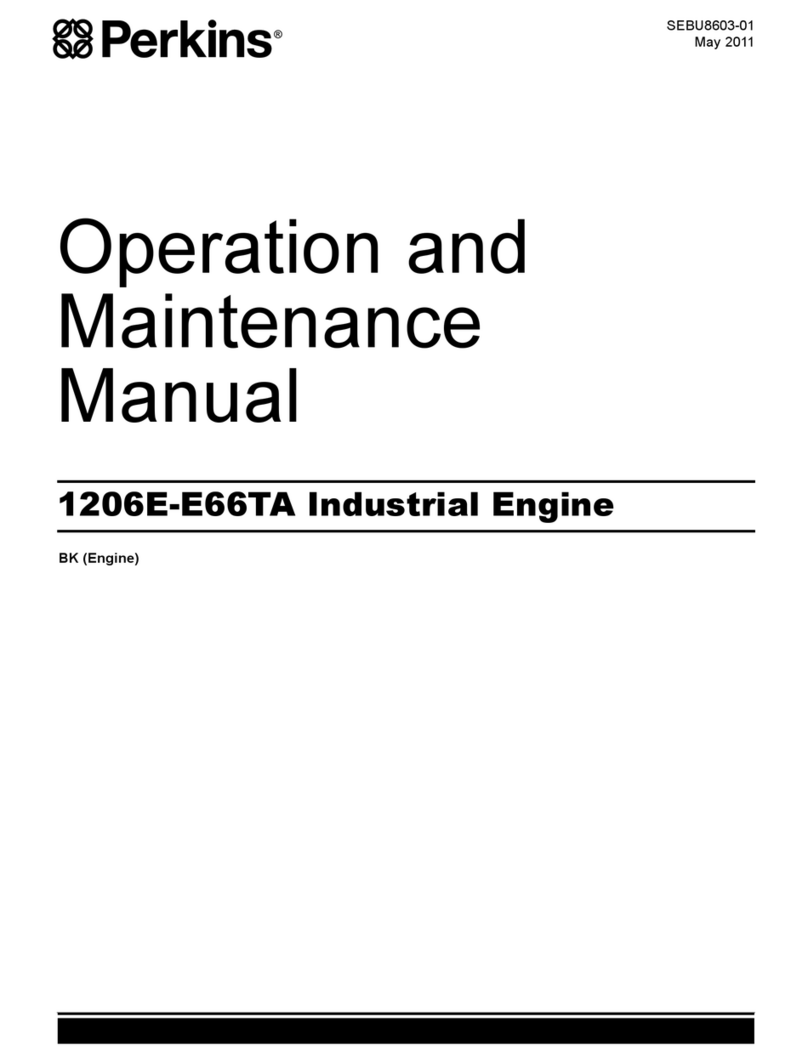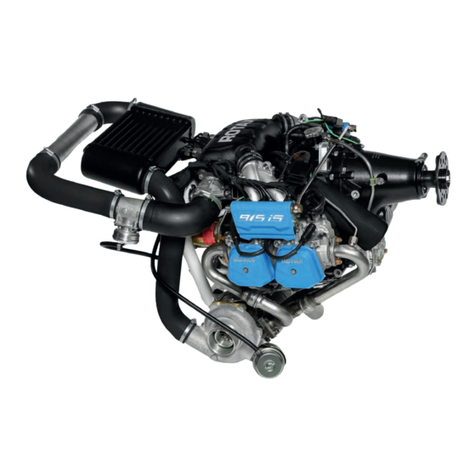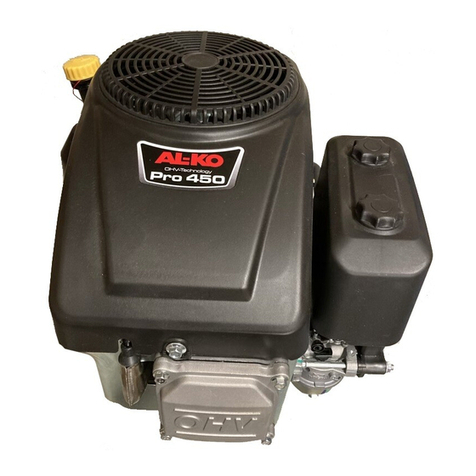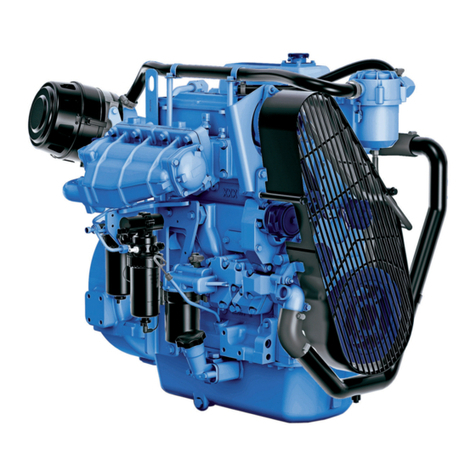EN
9
Fuel
This engine requires a mix of 20:1 gas to oil
lubricant ratio to operate and last a long
time. The bronze bearing at the bottom end
of the conrod depends upon this lube ratio to
operate properly. Do not go higher than a 20:1
gas/oil ratio or the warranty on your engine
will be voided.
To properly mix the fuel add 6.75 oz of good
quality 2-stroke oil to one gallon (or 53 mL
of oil to one liter) of 87–93 octane fuel.
(EVOX1001Q Evolution 2-stroke oil is
recommended) We prefer to add the oil rst
to our fuel container and to add the gasoline
second. This helps to insure a good mixture of
the oil with the fuel at the outset.
We have tested our own Evolution 2-stroke oil,
Valvoline, Shell, RedLine and Husqvarna oils.
Other quality 2-stroke oils should work as
well. Do not use Amsoil synthetic oil in
any form.
Fuel Delivery System
It is very important to properly construct
your fuel supply system to the engine to
avoid operating problems with our engine.
Our experience has shown that many seem-
ingly engine related operating problems are in
fact fuel delivery problems, not engine related
problems.
Fuel Filtering - Because of the incredibly small
amount of fuel that is being used by this
engine, filtration of the fuel is mandatory in
three different spots in the system:
1. Between the fuel jug and the tank
2. Within the fuel tank itself (with a ltered
clunk EVOA106)
3. Between the fuel tank and carburetor (with
an in-line fuel lter EVOA105.
Both of these lters (2 and 3) are included in
the engine package.
Tank Location - Because muffler pressure
is used to provide the pressurization to the
fuel regulating and metering carburetor, the
tank still needs to be mounted in line with
the carburetor, and as close to the rear of the
engine as possible. Care taken in mounting
the tank as described will provide trouble free
operations in all flight attitudes.
Tank Choice and Construction – Choose a
tank between 6–8 oz (170–240 mL). These
tanks will yield 17 minutes (for the smaller
tank) to 24 minutes (for the larger tank) of full
throttle flying time.
The clunk will not move around well if the tank
is smaller than 6 oz (170mL). Any tank larger
than 8 oz (240mL) will result in carrying extra
weight to no benet (unless you like to y for
a long time).
• Ensure you use a tank stopper made for
use with gasoline and/or smoke oil.
• We suggest a three-line tank system; one
for the line to the carburetor with the clunk
attached internally, one for the muffler
pressure to the tank, and one dedicated
to fueling/defueling the tank. We try to
avoid the T-fittings and other inline valves
because they can be a possible source of
air/fuel leaks.
• Ensure you use the provided Viton tubing in
all the plumbing of the tank, externally and
internally.
• Ensure you use the included felt lter clunk
inside the fuel tank.
• Ensure you use the included inline lter
between the tank and the carburetor.
• Ensure there is a good seal system for
the dedicated fueling/defueling line. We
highly recommend the HAN116 Fuel Filler
Assembly for its sleek look and ease of use
when installed on your airplane.



